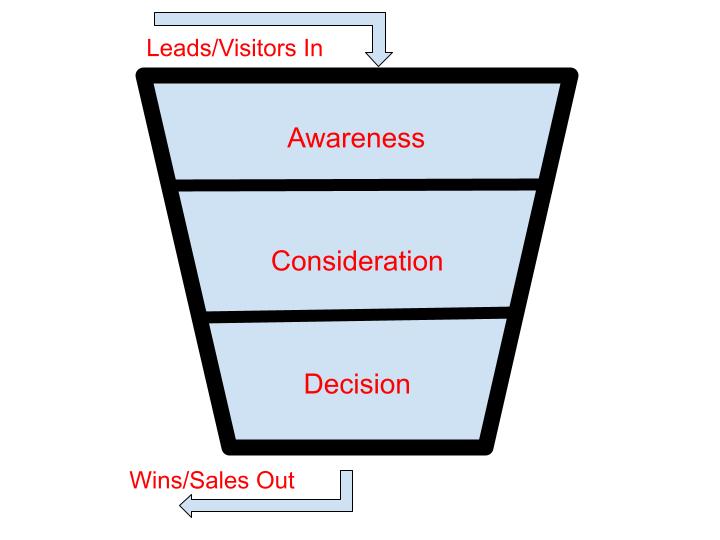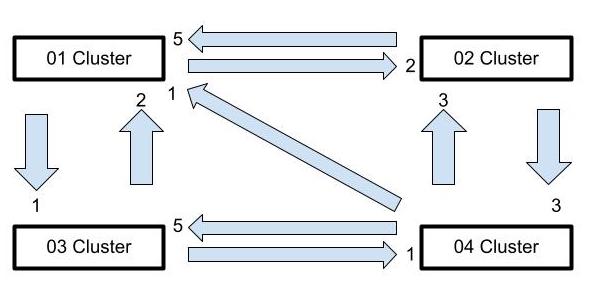How are you marketing your B2B SaaS product? My guess is some combination of outbound and inbound marketing strategies. Outbound marketing is all of the directly paid advertising you do using Google Ads, Facebook Ads, and so on.
Inbound marketing is everything you do to get clients to find your product organically. This is usually under the umbrella of content marketing, and good content marketing requires a solid content map template.
I’m a huge fan of working from templates in general. I also have a great success story template article for all your case study and/or testimonial writing needs.
What is a content map?
A content map is a set of documents that help you organize your content strategy. The goals of your content map can be summarized as follows:
- Organize your content so that it hits all phases of the sales funnel.
- Ensure that you are targeting all of your buyer personas.
- Plan your content clusters, pillar articles, and support articles.
- Maximize the interlinking opportunities.
- Prevent content cannibalization.
- Build domain authority on topics important to your customers.
That’s a lot of jargon! Let’s take a look at the meaning of each of these items in turn.
What is the sales funnel?
The sales funnel is a simple way to depict the buyer journey of your customers. Here’s my crude drawing of the sales funnel:

The basic idea is that new prospects come in at the top of the funnel and then some portion of the group filters down through each step and finally your sales come out the bottom. This is called the buyer journey. There are three main phases of the sales funnel:
- Awareness phase: This is where a prospect is vaguely aware of your company and the product you offer.
- Consideration phase: In this phase, the prospect has interacted with your website, browsed your products, and is showing interest in your services.
- Decision phase: This is the part of the funnel where the prospect either converts to your customer or exits your funnel.
Note that all three phases are often broken down into sub-phases, but those sub-phases are less important when building a content map template.
What is a buyer persona?
A buyer persona is a detailed and specific way to describe your ideal customers. A buyer persona should include everything you can think of that might influence the likelihood of a prospect converting to a customer.
Some parts of a buyer persona are obvious, such as the role of the person in a company or their budget. Other parts might seem less obvious but are still important to helping you target the customer, for example their age, gender, and hobbies. If you can tie all of these to your product when generating content, it can make the sales pitch feel a lot more personal and organic.
You should make your buyer persona as detailed as possible. If you can’t get all of your customers boiled down to a single buyer persona, then you can make multiple buyer personas. These buyer personas will come in handy not only when building your content map but also when drafting content briefs as well as writing great content.
What is a content cluster?
A content cluster is a set of articles on a related topic. It consists of a longer pillar article focused on an important or hard to win keyword as well as multiple shorter articles that are used to support the main article.
While this isn’t the only way to organize your content (or the only part of blog content organization), it is a proven strategy to build domain authority, push visitors from support articles to pillar articles and then to sales pages, and reduce the risk of content cannibalization. You can keep track of all your content in this helpful free blog content planner template.
The following are the three terms you need to know:
- Content cluster: This is a group of content on a single topic. It includes the main pillar article and some number of support articles. In a content cluster, all support articles link to the pillar article and the pillar article links to all support articles. Content clusters should also link to other content clusters.
- Pillar article: Sometimes referred to as a corner article, this is the main article of a content cluster. As a rule of thumb, the pillar article should be as long as all of the support articles combined.
- Support article: These are short articles on related topics designed to especially improve the ranking of the pillar article in search engine results.
What is interlinking?
Interlinking, sometimes called inbound links, is the process of adding links from one page to another on your website. This helps search engines explore your website. It also keeps visitors on your page longer by helping them find related articles. Interlinking is an extremely important part of building up your content marketing strategy. Finding places to insert links, especially from older and more established content to your new content, is perhaps the biggest reason to use my content map templates to build your content map.
What is content cannibalization?
Content cannibalization is when you have more than one article in your blog ranking for the same keyword. Since the top result gets more than twice as many clicks as the last one on the front page and over 90% of all clicks go to the first page, you do not want to split search queries across two articles.
By formulating very specific long-tail keywords, each support article targets a different search query. Then, the main keyword can be won by the pillar article. That’s because all of these support articles show the Google algorithm that your website has knowledge on the topic.
But wait, what do I mean by keyword or long-tail keyword?
A keyword is the search query you are aiming to hit. For example, I want B2B SaaS founders and CMOs to find me when looking for “content map.” Unfortunately, “content map” is a very difficult search to win. There’s loads of big companies targeting this keyword.
Long-tail keywords, sometimes called keyphrases, are versions of the keyword that include other words. They represent more specific search intents (the information desired by the person searching on Google).
To eventually win the google search “content map,” I started with the article targeting “what is a content map” and am now writing the article on “content map template.” By the time I get to the pillar article on “content map” Google will (hopefully!) think that I am an authority on the topic because of all these support articles.
What is domain authority?
Domain authority is basically how much Google thinks your website knows about a specific topic. Note that this is not a Google metric, so it is really just a third-party estimation of the knowledge your website has on a topic. However, it is a useful metric to track.
Even if you write the best article ever on a topic, it is not going to rank well if Google doesn’t think you know about that topic. This is what all those support articles are for—they build the knowledge of your website so your pillar articles rank better (while not cannibalizing them).
Small topics might only require a handful of articles to build your authority to the level needed to compete on Google. Larger ones can require dozens, or even hundreds, of content clusters to rank well. A good content map template will help you find content cluster topics that are close (but not too close) to each other so that you can build up a strong authority on a topic and then spread that authority to neighboring topics.
Macro-view content map template
You are going to need three content map templates to really set yourself up for success. This is the first one. It helps you take your buyer personas and match content clusters for all of them to each step of the sales funnel.
It’s important to have content clusters that focus on each buyer persona as they are going to respond to different tones. Similarly, it is important to have content clusters targeted at each part of the sales funnel as prospects want different information at each stage of the buyer journey.
Take a look at this macro-view content map template:
| Buyer Persona 1 | Buyer Persona 2 | Buyer Persona 3 | |
| Awareness | Clusters targeting BP1 in Awareness phase | Clusters targeting BP2 in Awareness phase | Clusters targeting BP3 in Awareness phase |
| Consideration | Clusters targeting BP1 in Consideration phase | Clusters targeting BP2 in Consideration phase | Clusters targeting BP3 in Consideration phase |
| Decision | Clusters targeting BP1 in Decision phase | Clusters targeting BP2 in Decision phase | Clusters targeting BP3 in Decision phase |
I’ve made this with three buyer personas, but you can add or remove columns as necessary. You’ll want to have content clusters in all cells eventually, but you don’t necessarily want the same number of content clusters in every cell.
If your service is novel, then you’ll need more content clusters targeting in the Awareness phase. However, if your service is well known but not a necessity, then it might require more Consideration phase content to get prospects to think about making a purchase. Finally, if you have a lot of competition and your service is popular and needed, then Decision phase content is likely to be the bulk of your strategy.
The same thinking applies to your buyer personas. If Buyer Persona 3 is paying >$1000/month for your enterprise service level while Buyer Persona 1 pays $10/month for an individual starter plan, then you’ll probably want to spend more time targeting Buyer Persona 3.
What if the pillar fits into more than one cell?
It is ok, in fact probably normal, for a content cluster to target more than one buyer persona or part of the sales funnel.
Multiple buyer personas
Let’s look at these hypothetical buyer personas:
- Freelancer Freddie: Freddie is a young freelancer who is looking to use your cheapest service tier to simplify all aspects of his work.
- Small-biz Susan: Susan is the manager of a 10–40 person company and is looking to use the second cheapest tier of your service to automate some tasks in all departments of the company.
- HR Harriot: Harriot is the head of the People Operations at a >1000 person corporation. She is not satisfied with her current service and is looking to get a custom-made enterprise solution to automate all aspects of HR.
It is easy to imagine that Freelancer Freddie and Small-biz Susan would be searching on Google for some of the same things. Likewise, Small-biz Susan and HR Harriot probably have some overlap in their search history too. In this content map template, you have three options in this case:
- Add the content cluster only to the cell that is the main target.
- Add the content cluster to both cells that are targeted.
- Add the content cluster to the main target cell in black and to the secondary target in red.
Option 1 is the best long-term solution. Even if Freelancer Freddie and Small-biz Susan have the same searches, it’s unlikely that the same tone will appeal to them. Freelancer Freddie is probably reading on his smartphone while watching TV at night. Small-biz Susan is more likely to be looking for information at 10:00 a.m. in her office.
They are going to read articles differently and respond positively to different tones. While you might get both of them on your site for the same article, you need to decide who is the target and focus your tone of voice on that buyer persona.
Option 3 can help early on while your content map is still sparse. It helps you fill up all cells quickly while keeping in mind the main target for writing style (in black). Option 2 should be avoided. If you are writing for two different people, you are actually writing for no one!
Multiple stages of the buyer journey
The same logic applies here. You’ll probably end up having some articles in a content cluster that are targeting a different part of the sales funnel. That just makes sense as prospects search different long-tail keyword versions at different points in the buyer journal.
However, you want to make sure that your articles are focused on a single phase of the sales funnel. Whichever phase your pillar article targets, that’s the cell in which you put your content cluster.
Micro-view content map template
Once you have the overall view of your content strategy, it is time to map out each cluster. That’s the goal of the second, micro-view content map template.
I use the following table as a way to plan out a content cluster:
| Word Count | ## Cluster Name | Keyword | Planned Section Titles | |
| ## | 4000 | Pillar | ||
| ##a | 1000 | Support | ||
| ##b | 1000 | Support | ||
| ##c | 1000 | Support | ||
| ##d | 1000 | Support |
As you can see, this content cluster has four support articles with a goal of 1000 words each and a pillar at 4000 words. The table has a space to write the keyword for each article as well as any section titles you want to include. The latter will help when it comes time to draft the content briefs.
Interlinking can be a bit annoying since you need to link to and from all of the articles, which means you are putting in links to pages that do not yet exist when writing the articles. That’s why I use a cluster number and cluster name. Then, I can use the placeholder link “ClusterName##” until the page is created.
I also add letters to the support articles to show that they are below the pillar but also under the same cluster name and number.
I usually use the pillar’s keyword as the cluster name. However, if the pillar’s keyword is long or complicated, I might pick a related but shorter, one-word name.
Graph-view content map template
Here is the third content map template. This one is specifically designed to help you keep track of interlinking among different content clusters.
Here it is:

The arrows show the direction of links and the numbers how many article to article links there are. It can be worth specifying, for example “two articles link to the same article” or “one article links to three articles,” but that information can be left to a separate document.
This graph-style content map template can help you diagnose issues with your interlinking strategy. In general, old content should link to new content and new content should link to old content.
However, linking old content to new content is more important. That’s because the older content is likely generating more visitors because it has become established on Google. In addition, it is harder to keep going into older content and finding places to link to new content. Therefore, even though it is more valuable, it is often not done by content strategists and content managers.
If you look at the example, 01 Cluster is only linking out four times while it is getting linked to eight times. This indicates it might be a good time to go back and reread that first cluster to find opportunities to add in links to newer content.
Content map templates make content strategy easy
Content strategy can be a daunting task. There’s a lot of psychology involved in figuring who your customers are and what they want. One thing that shouldn’t be hard is putting the plan on paper.
Hopefully my content map templates can help make this task a little easier.

